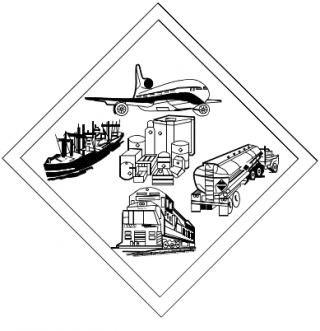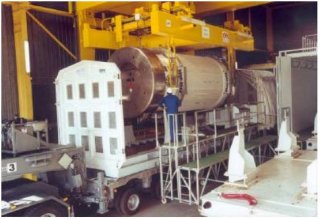Transportation of Radioactive Material
- All shipments of radioactive material must be packaged and transported according to strict federal regulations.
- Markings on containers and vehicles explain the contents of each package using standard terms, codes and internationally recognized symbols.
Radioactive material can be transported by truck, train, plane or ship. There are special regulations that help keep drivers, the public, and the environment safe. The packaging used to transport radioactive material is tested to make sure it will keep people safe if there is an accident.
About Transportation of Radioactive Material
Every year, about three million shipments that contain radioactive material are transported in the United States. Radioactive material is used in medicine, power generation, research and manufacturing, and by the military. Like other products and materials, radioactive material is shipped from one location to another.
Source: U.S. Nuclear Regulatory Commission (NRC)
Shipping radioactive material is highly regulated. The amount and type of radioactivity present in the shipment determines how it can be transported and what kind of controls are required. Some materials that are very low in radioactivity can be shipped with no, or very limited, controls. Other materials that are highly radioactive and could pose a danger to the public require controlled routes, extra security and notifications to state and local officials. Shipping companies use special packaging, labeling and methods when transporting radioactive materials. These safety measures help keep people safe in case something goes wrong.
Special packaging is required for radioactive materials. Like deciding between an envelope and a box, the type of packaging used is based on the radioactive material being shipped. Each kind of packaging requires specific testing to make sure that it can withstand accidents, fire, and water if something goes wrong. Shippers use labels on packaging to identify the types of materials inside the package, and, when required, place a sign on the vehicle that states that radioactive material is on board. The sign also indicates how radioactive the material is.
Source: U.S. Department of Energy (DOE)
Most radioactive material is shipped on the highway. When transporting materials that are highly radioactive, shipping routes are picked very carefully and shipments are tracked. Sometimes, these shipments are escorted to provide extra security. Depending on the level of radioactivity, shipments may have to follow the most direct route while bypassing heavily populated areas.
Drivers who transport radioactive material are trained in basic radiation science and in radiation emergency safety. Safety and training practices make sure that the materials and packages are handled properly so that they cannot harm workers, the public, or the environment.
While not all radioactive material is highly radioactive, there are special requirements in place when transporting the most hazardous radioactive materials. Very high-level radioactive materials, such as spent nuclear fuel, must be shipped in specially designed containers called casks. These casks are designed to contain the high-level radioactive material even if there’s an accident. Casks undergo a series of extreme tests before they are used, such as:
- Collisions with objects that cannot move, like being dropped from 30 feet in the air.
- Being dropped 40-inches onto a steel spike.
- Being burned in a gasoline fire for 30 minutes.
- Submersion in water for eight hours.
For more information about these kinds of tests, please see Sandia National Laboratory’s webpage on transportation.
What You Can Do
- Be alert. Strict rules about packaging and shipment of radioactive material keep the risk to the public very small. If radioactive materials have been released due to a transportation accident or broken packaging:
- If you are the first person to see an accident, call 911 immediately.
- Follow instructions from the responders on the scene of the accident.
- Move away from the area.


